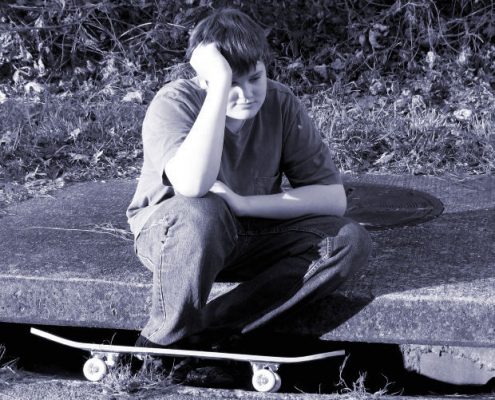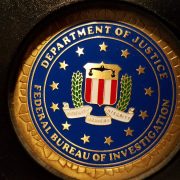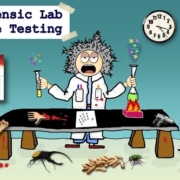School Shootings: Spontaneous Acts or Planned Assaults?
School shootings are rarely sudden and spontaneous acts. While the time between the attack and the onset of the plan may be short, there is usually a period of planning that could afford law enforcement time to act and prevent the incident. However, it is important to note that officials must often rely on tips and information from the public and it is those tips that must be pursued.
Prior to most incidents of violence, including school shootings, other people knew about the attacker’s plan. Typically, though, this information is known to other school kids or even siblings. But rarely are adults notified.
The targets/victims of these attacks are seldom given warning or notice. Instead, other indicators are often present that should alert school officials to potential trouble brewing (bragging about owning guns, etc.). When officials are made aware of potential threats they should investigate immediately. To the troubled student, a failure to act may seem like an open invitation to carry out an attack.
The use of profiling is, well, practically useless when it comes to identifying school shooters. This is so because most kids who “fit” the profile would never engage in such activity. Therefore, instead of profiling as agencies often do in the case of serial killers, etc., officials should focus on the individual’s behavior and their communications via social media and through spoken word.
Prior to an attack, most school shooters engaged in behavior that caused others concern or presented signs that the student was in dire need of some type of help.  An intervention is required; however, it is important that officials not disgrace or embarrass the student/suspect.
An intervention is required; however, it is important that officials not disgrace or embarrass the student/suspect.
Severe personal loss (death of a loved one, for example) or personal failure are often factors in the motives of school shooters. Some have even attempted suicide.
Many shooters felt bullied prior to the assault … their motive for pulling the trigger.
Most school shooters had easy access to weapons prior to the incident and many practiced shooting, regularly. Parents absolutely must monitor the storage and use of ALL firearms in the home. This is in addition to monitoring a child’s online activity and activities with friends in and outside of school.
Other students are sometimes involved in some capacity. For example, they’ve heard their classmate talking about their goal(s).
Despite the best intentions and absolute quickest response time of patrol officers, most school shootings are stopped by someone other than law enforcement. In fact, most shootings were so brief they were over before police arrived.
Obviously, reactive policing (investigating after the fact) is not the answer to this problem. A proactive approach is needed and that could include a bit of old fashioned information gathering (student behavior and communications).
Law enforcement has no means of knowing which students/kids have the propensity to carry out such a horrific act. Therefore, it is up to school officials to make the initial assessment(s).
In addition, that information should be shared with law enforcement, and together the police and school officials could evaluate the facts and zero-in on students who’re planning to attack.
To make this work, laws preventing the sharing of information with law enforcement may need modifying (in some states). And, school officials MUST be willing to work with law enforcement. Sadly, some school officials refuse to do so.
I know the knee-kjerk reaction is to confiscate all guns, but it’s not going to happen. Besides, that alone will not stop some from carrying out their murderous intentions.
By the way, the information above is from the paper:
THE FINAL REPORT AND FINDINGS OF THE SAFE SCHOOL INITIATIVE:
IMPLICATIONS FOR THE PREVENTION OF SCHOOL ATTACKS IN THE UNITED STATES
UNITED STATES SECRET SERVICE AND UNITED STATES DEPARTMENT OF EDUCATION
The paper was written, published, and made available to officials in 2004. Yes, 14 years ago, our government knew this problem existed and had plans and ideas in place to stop school shootings. The ball was dropped by many, many people who could’ve had a hand in preventing shootings by picking up on the warning signals exhibited by potential killers.
Who knows, had officials (school and law enforcement) taken a moment to read the paper written by the Secret Service, parents in Florida this week might not be attending the funerals of their children.
So, what are your thoughts as to how to make schools safer? Armed officers in the hallways and patrolling the perimeter? Security fencing? An indoor Sally Port where anyone who enters the school must be buzzed into the waiting area where an officer could check to be sure all is okay before allowing them entry through the second door into the school. Armed teachers and cafeteria workers?
 And, do you believe the FBI dropped the ball on the Florida school shooter? Had they investigated the leads would/could they have prevented the tragedy?
And, do you believe the FBI dropped the ball on the Florida school shooter? Had they investigated the leads would/could they have prevented the tragedy?
*Please, no cop-bashing, politics, politician-bashing, etc. Just simple, thoughtful responses.













Lee, I’m really surprised you didn’t mention the number one thing these young shooters have in common. They’re boys.
And they’re boys who have ready access to assault weapons.
At least a few armed guards or armed teachers would be enough. Panic buttons to summon them would help. Also, metal detectors. I’m wondering about backpacks. Maybe I’m wrong, but don’t most schools have computers these days? If so, students can leave their books at home.
My children are out of school and the grands are a ways away. While I think there are answers in some form of better background checking with a universal database, perhaps age increases in gun buying, a better understanding of what is mental illness, and of coordinating community policing with school administrations. This incident has, sadly, cast doubt on the efficacy of our government agencies from the local law officer on site to the FBI. When the school administrators knew this kid could not come into the campus with even a backpack, the question is how did he get in there?
I am unsure that any new law will solve this problem. I do agree with the father of the Columbine student killed 19 years ago. We have lost the value and quality of relationships, of being aware of the outlier, of conversation. It is almost funny that Hillary Clinton’s thing was ‘it takes a village.’ It is unfortunate that has become politically toxic.
I often wonder how there are people who say we must protect and save our children when we have laws protecting those who kill babies in the womb, who allow for the horrific lack of care for the elderly, who allow the FDA to take so long in getting lifesaving drugs to market. If you respect life you should respect all life.
Much of what has taken place in our society dwells on the secular at the cost of family and faith. New laws just add to the burden of citizenship and can put our republic’s constitutionality at risk.
We are neither Europe nor Australia! Our basic rights and freedoms are inherent in our political and legal system. I do not see the Constitution as a *living* document. But one that has stood the test of time.
But I know that we must put behind us the tired bromides and think outside the box, figuring out how to protect and secure our nation as well as save those who feel betrayed.
I think we need to take a page from countries that have learned from their mistakes and taken actions that have prevented additional mass shootings. I don’t believe anyone except law enforcement and the military needs semi-automatic weapons. Arming teachers is a ludicrous idea. By the time they pulled their gun out – oh wait, they wouldn’t have had time to do that given their opponent is probably better armed.
I also think we as a nation need a major reboot. Why have these shootings become so commonplace since Columbine? I believe social media and violent video games play a role in creating a disconnect between the reality and fantasy of murder. But I also believe the tone of conversation has gotten angrier, meaner and darker. No one takes responsibility for their actions anymore. It’s always some other guy’s fault. We need to be kinder to each other and more empathetic in general, and teach our kids this lesson too. My daughter was the victim of vicious bullying. It triggered an anxiety disorder that will be with her the rest of her life. Look at these shooters – disaffected, isolated, in pain but not able to manage it. Some mentally ill, some technically not. I don’t know how anyone could have gotten through to this kid. I wonder if he suffered from some illness yet to be uncovered. But adopted, orphaned, and left to fend for himself. The combination was lethal. But given all that – why in God’s name was he allowed to own guns? Why in God’s name did Adam Lanza’s mother buy him guns? We parents also have to take responsibility.
Sorry this is so long. If anyone hasn’t read the book, Columbine, do so. It’s a game changer.
As to the FBI, I don’t know if they dropped the ball on this or not, but I’m tired of them being dragged through the mud. I’ve known some incredible FBI agents and have more faith in them than our elected officials at this point.
Ellen, I so agree, about the book and everything else you said. The idea of arming teachers is INSANE. And the assertion that shooters wouldn’t target schools if they knew teachers were armed? Someone has clearly never heard of “suicide by cop.” These boys PLAN for their own suicides as part of the deal.
Arming teachers is not the way to go. To be effective, the teacher would need the gun close by at all times and within reach. How many educators want to teach with a gun on their desk/podium? How many students would try to grab the gun when the teacher’s distracted? The teacher must be facing the door at all times or else the shooter will sneak in with her back turned. If the teacher is busy shooting, who will take care of the frightened/hysterical students in her room? How quickly can a teacher drop what she’s doing at the second a shooter enters the room and grab the weapon, get into a stance, aim and fire? Will the shooter stand and wait for the teacher to get her gun? And how many teachers would be willing to shoot to kill if the assailant is a former student? Teachers are not trained as police officers and we should not expect them to act as one.
Good points, all.
I’ve said several times this last week or so that this isn’t a single-point issue, and won’t have a single-point solution. Statistically, rifles in general are not the threat people think; you’ve posted the stats on murder weapons, and rifles are down low on the list, behind blunt force and manual weapons.
I’ve seen bans of the AR platform called for. That’s pretty much pointless without door-to-door confiscation, and I don’t think anyone wants to go down that road.
I’ve seen suggestion of armed teachers. I don’t want school districts to arm teachers. That raises a number of issues with regard to procurement and so forth that would horribly muddy the waters. Instead I’d like to see districts create a policy that allows teachers who are so inclined to carry their own firearm. Districts can set objective standards for mode of carry (like requiring on-body carry), but should not require a particular holster. Districts can set reasonable and objective standards for proficiency testing, but no more strict that the requirements for local patrol officers. I could go along with some sort of objective psych screening, but again, no more strict than local law enforcement. Teachers aren’t going to be forming a 4-member tac wedge and hunting the bad guys. They’re going to be in the corner of their classroom waiting for the bad guy to break in, or the good guys to identify themselves.
I can go along with Red Flag/ERPO’s under certain conditions. There needs to be a way to protect someone who is a danger to themselves and or others. However, there must be due process involved. There must be a third party advocate immediately appointed for the person who is subject to the order. This person cannot be employed by the court system that commits the person. There also needs to be a mechanism in place to restore rights to the person once the crisis is over. I’d set a maximum initial length of 21 days, with a required hearing no more than 96 hours after any ex parte action. No more than three renewals without some sort of more formal action, and if the orders expire on their own, no lasting restrictions. An ERPO should not be considered a permanent disqualification under USC 922 G 4.